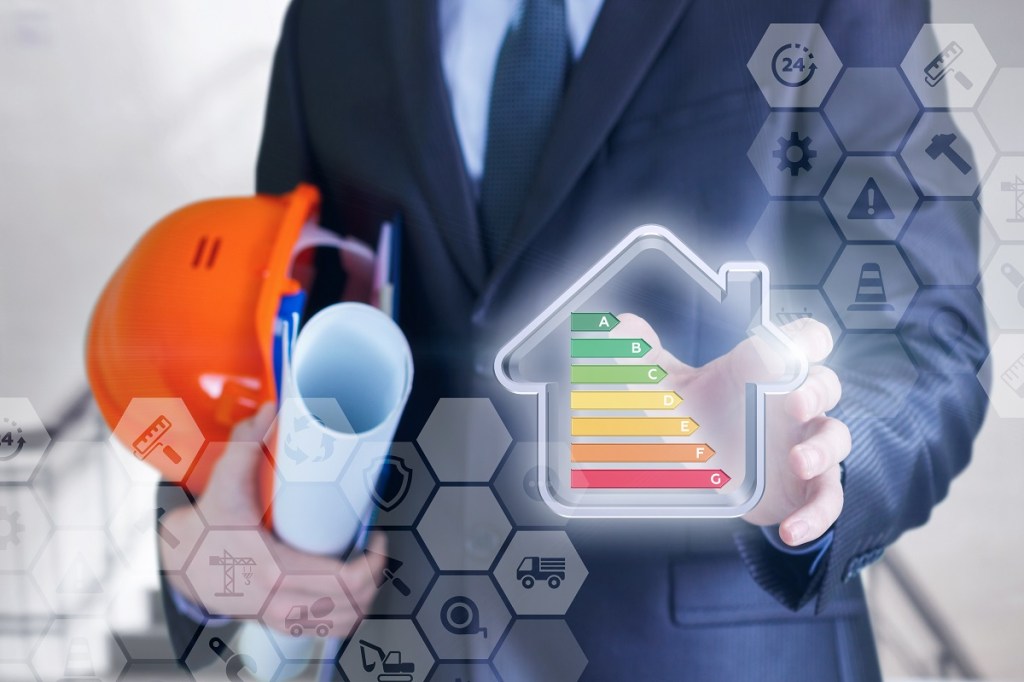The zero-carbon train has left the station for housing and is the future for the industry, Sam Rashkin, the founder of Retooling the U.S. Housing Industry, told listeners as part of a recent webinar hosted by Buildxact. Rashkin said getting to zero carbon is a journey and there are “various steps on the path that are viable and fair choices for builders.”
Energy codes have become more rigorous over time, including a 40% increase in rigor over the past 10 to 15 years, and many states are adopting codes that are targeting zero carbon. Rashkin said average HERS scores are becoming lower and lower, and state policies are making major commitments to become carbon free in the near-term future, underlying the importance and value of zero-carbon building. While zero-carbon homes can deliver higher performance, Rashkin said they are not without their risks as well.
“If you look at the homes built in the mid-’70s, they were pretty inefficient, and, of course, we wanted to go toward high-performance enclosures. They [offer] lower bills, more comfort, and more safety,” Rashkin said. “But I’m transparent, you’ve got to know there’s greater risk. As we increase the performance of the enclosure, we are taking on substantially greater risks of moisture, comfort, and indoor air quality. It doesn’t mean we don’t do high-performance enclosures, it means we do them and we manage the risk.”
Throughout his presentation during the “How to design and build all-electric homes in a smart, profitable way” webinar, Rashkin outlined basic and simple building blocks to help builders get to zero carbon “efficiently, effectively, and with the best results,” such as moving HVAC systems from the attic, using thin triple low-E windows to maximize efficiency, or using insulated foundation forms that combat thermal bypass problems between. The first step is to start with the high-performance enclosure and optimize energy, air leakage, moisture control, and vapor control.
“When you optimize these key concepts, now more than half the energy consumption will be the equipment, appliances, fans, and lighting inside [the home],” Rashkin said.
He said the first step for a high-performance, energy-efficient home is to optimize the enclosure and the control layers (air, thermal, built moisture, and moisture vapor).
“If you don’t get all these control layers integrated and optimized, you can’t go back and change. We’re locked in with the enclosure assemblies, the insulation, the air tightness, the moisture control; we have to get this right,” Rashkin said. “The other reason is the efficiency with optimized enclosures, we get the energy-efficient performance plus we get the critical moisture control.”
To manage the risks associated with building high-performance, zero-carbon homes, builders should emphasize comprehensive moisture control, comprehensive comfort, quality installation, and comprehensive indoor air quality. He also said attention must be given to ensure homes are resilient and future ready.
“I’m hoping that the industry realizes that resilience is not extra credit, water efficiency is not extra credit, electric-ready [homes] are not extra credit,” Rashkin said. “Embodied carbon has to be addressed. I believe optimizing user experience is absolutely critical for high-performance builders.”
‘Zero Carbon Is Critical, But It’s Not Enough’
Focusing only on high-performance homes ignores many other elements that homeowners value. In addition to strong performance, resilience, and reduced energy consumption, zero-carbon, all-electric homes can also deliver superior user experience for homeowners, an important value-add as homes are where individuals spend the majority of their time.
“Everyone expects community, daylight, outdoor spaces, work-from-home capabilities. If the high-performance builders are not ‘housing as a system builders,’ they won’t be the industry leaders,” Rashkin said. “If all I do is get a zero-carbon home, with better performance, it won’t get the job done. This is where people spend their lives, they expect a lot more.”
Rashkin said homes are transformative experiences. Combining zero-carbon, high-performance building practices, such as energy-efficient enclosures, high indoor air quality, energy-efficient components, with smart design integration can deliver strong value to homeowners while also driving down costs for builders. As an example, if a typical home with a basement and attic space was instead built with a livable, high-value upper level and no basement, builders could deliver a much higher-value home with significant cost savings in materials, labor, and build time associated with creating a basement.
